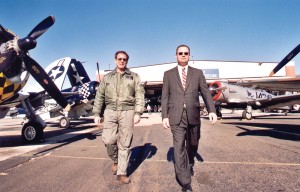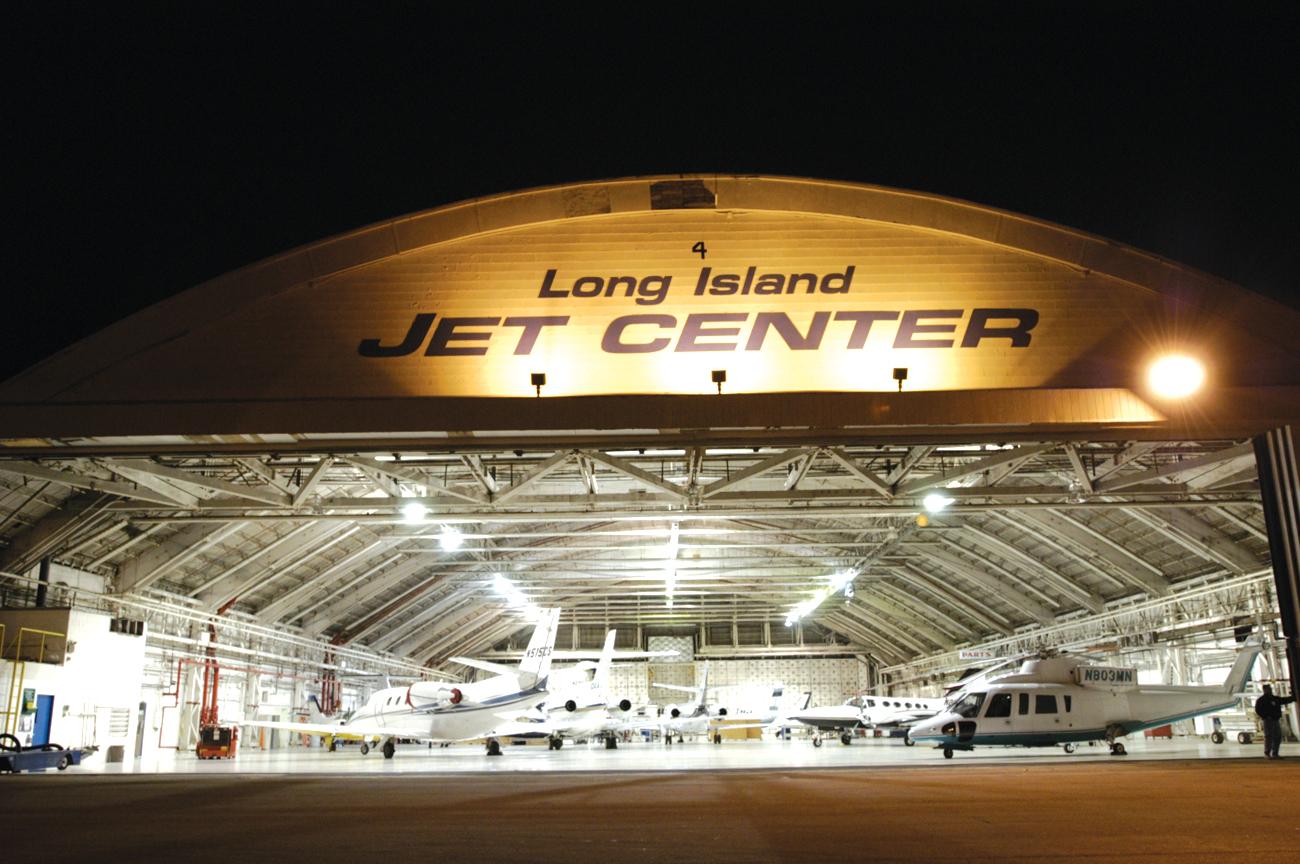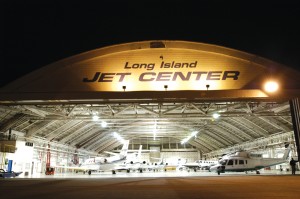By W. Stephen Dennis
Long Island Jet Center, previously known as Metro Air, was once a modest mom and pop aviation shop at MacArthur Airport (ISP) in Islip, Long Island. Howard Goody, owner of Sam Goody Music prior to his aviation ventures, started the business in 1978, shortly after learning how to fly over Farmingdale skies at mid-island Republic Airport.
“Howard had a passion for flying,” explained Bill McShane, current CEO of Long Island Jet Center. “He was a pilot at heart and went on to own a Duke and a Baron, which he flew with passion. He truly loved the art, sport and business of aviation.”
In 1978, Goody purchased the Macintyre Aviation facility at Long Island’s MacArthur Airport. With close to 30,000 square feet of hangar and T-hangar space and 40 tie-downs, Goody was the first to bring FBO competition to the airport with his innovative Metro Air operation.
He then built two additional hangars, purchased another facility, and in 1985, sold the company to a group of investors of which McShane was a part. The investors’ attempt to run the FBO didn’t work well, and in 1988, Goody and McShane joined forces and took the FBO back.
The men made for great partners in running the operation due to their shared vision for the potential of aviation business growth on strategic Long Island.
“We were working the vision together,” explained McShane. “We both knew we had the potential to corner Long Island’s business aviation market. New York was obviously the financial capital of the world, with, at that time, perhaps the lowest service levels and lowest capabilities of anywhere I had visited in the U.S.”
The company’s goal: to bring a network of quality fixed base operations to Long Island.
“Our joint mission was to bring the service level—-the look and excellence of premier FBOs that existed in places like Florida and California—into New York, in order to correctly represent the region we live in,” said McShane.
Up until Long Island Jet Center, there hadn’t really existed a true modern full service FBO in the then-industry’s sense of the word.
“Back then, when people came to New York they expected two things: high prices and bad attitudes,” explained McShane. “The first part of our mission was to lease sufficient land in order to place FBOs at various airports in Long Island.” A long-term lease was secured, then another, and another.
Aviation in New York
The aviation economic overview for New York is stunning. A recent document prepared by the New York State Department of Transportation notes that on a typical day aviation will generate $97 million in the state, spending its dollars inside the very heart of neighboring communities.
Over $35 billion in annual economic activity among New York businesses and institutions is attributable to aviation—some 4.3 percent of New York’s gross product. Payroll from aviation makes up $13.4 billion or 2 percent of the total income in the state.
The document also notes that GA has become increasingly important as air charter flights continue to increase. These charter flights have become a preferred choice for many businesses to move executives, clients, vendors and investors point-to-point in a timely and cost effective manner.
About 12,000 aircraft landings and takeoffs will take place at the state’s airports, while 28,000 visitors will arrive via airports. Those airports will see 216,000 state residents report to work while another 131,500 jobs are supported indirectly by a vibrant aviation industry.
On a national scale, GA is a $20-billion-a-year industry that includes private business, agricultural and governmental flying into and out of 5,400 airports.
Closer to home, near Manhattan and “The Island,” two of the busiest airports in the world, Kennedy International Airport (JFK) and La Guardia (LGA) are on the west side of Long Island, but throughout the rest of the island sit nine small public-use airports that serve everything from small private planes to corporate and commercial jets.
With over four million people calling Long Island home between its two counties, Nassau and Suffolk, Republic becomes a vital reliever to Teterboro (TEB), White Plaines (HEB) and metro New York.
Developing the Plan
In 1994, Goody and McShane, determined to change the face of Long Island’s aviation business, purchased Hudson General Aviation at MacArthur Airport in Islip, Suffolk County, Long Island, and rebuilt the facility. At that time, Metro Air was renamed Long Island Jet Center.
Customers flying into LIJ’s centrally-located MacArthur Airport facility will find 180,000 square feet of hangar and office space, five acres of transient ramp, and 30 acres of airport property. Southwest Airlines currently runs MacArthur Airport, which serves small commercial carriers, such as Carnival Air and Spirit.
The following year, in 1995, the company purchased the West Hampton Beach location at Francis S. Gabreski Airport, in West Hampton Beach, in eastern Long Island. Customers flying in or out of this location will visit what was once an active Air Force base, which has since been renovated to host corporate and famed clientele frequenting eastern Long Island.
Westhampton Beach, located in the prestigious summer vacation spot of The Hamptons, is the most seasonal of LIJ’s airport locations, and truly comes to life with the warmer weather.
Already a leader in FBO services for over 15 years, and a perfect link in connecting Goody to his aviation beginnings, Long Island Jet Center opened its latest operation at Republic Airport on Jan. 7, 2000. Republic Airport is the busiest GA airport in the state of New York, with a total of over 200,000 itinerant flights each year.
As a GA/reliever facility, Republic Airport generates $139 million of economic impact to Nassau and Suffolk counties each year. This last link in the triad of Long Island Jet Center proved, once again, yet another vital component to Goody and McShane’s vision of aviation on Long Island.

Long Island Jet Center CEO Bill McShane (right) in front of Republic Airport’s American Air Power Museum.
Customers visiting LIJ’s Republic Airport facility will find services ranging from flight training and aircraft charter, to piston and turbine aircraft maintenance. The Farmingdale operation has 120,000 square feet of office/hangar space and the maintenance hangar houses the original control tower of the airport and occupies 70,000 square feet, 44,000 of which is hangar space.
Long Island Jet Center provides services ranging from property management to corporate and commercial airline servicing. The total fueling at MacArthur Airport for last year and tentatively this year is 11 million gallons of fuel.
Republic Airport is also home to the American Air Power Museum and the Long Island Historical Society. The museum welcomes aviation enthusiast from around the world, offering visitors the opportunity to see and hear the sound of WWII aircraft in flight. The Long Island Historical Society, formed in 1987, maintains the Airport Historic Exhibit on the first floor of the Main Terminal Building.
Long Island Jet Center proudly sponsors this historic museum, where visitors will witness the flight of historic aircraft such as the B-17 bomber and P-47 Thunderbolt, which can be viewed in historic Hangar 3, the final assembly site of that airplane.
Post 9/11 setbacks
Like many FBO businesses post 9/11, Long Island Jet Center experienced a major downturn in operations.
“More so than most FBOs due to it’s proximity to New York City, for about two years,” McShane said. “We’re just now seeing true forward movement.”
Republic Airport, in East Farmingdale, was the hardest hit; it fell within a 25-mile no fly zone around New York City and was also affected by a ban on non-instrument flying within 20 miles of major airports. In the months following the attacks, Republic’s landings and takeoffs were down a stunning 96 percent from normal levels.
“It really had a pretty devastating effect on us overall,” said McShane.
Air Force One
After 9/11, Air Force One, carrying the president of the United States, arrived at Republic Airport, in March 2002. The arrival of Air Force One offered unprecedented challenges and opportunities for the airport and its affiliates. It required them to work with a spectrum of security that ranged from the Secret Service and military police to the state police, Nassau and Suffolk county police departments, the FAA, White House protocol, communications and press operations, as well as coordinate the ongoing air operations of one of the busiest airports in the state.
Air Force One is the designation given to any fixed wing aircraft in which the president travels. In this case it was a Boeing 757 that touched down and taxied to the ramp of Long Island Jet Center on the northeast end of the airport. The arrival was so carefully planned that McShane himself had already pre-measured the height of the temporary stairs brought up to the 757 hatchway.
LI Jet Center was permitted to refuel Air Force One at “the standard government rate of reimbursement,” dryly noted McShane. With the precision of a military marching team, Air Force One advance staff stood at rigid attention to direct the taxing aircraft to stop at a precise location on the ramp.
Bright horizons
Howard Goody passed away nearly three years ago, but his love for aviation and the passion and initiative he dedicated toward that love is translated into Long Island Jet Center’s vision for tomorrow.
“This company began as a family business,” explained McShane, “Since Howard’s death we’ve been in the process of a rebuilding and rebirth. Thanks to his vision and the daily practice of doing successful business, we’re now truly poised to take true advantage of our positioning.”
McShane said the future looks great. “I’ve always monitored the cycles of aviation,” he said. “Our business is a couple of years behind the economy coming up and going down. Now is the time. We’re currently on the upswing side of the aviation market.”
He said that one of the things he’s learned about the FBO business is that it comes in cycles.
“As an operator, you must plan for the next 10 years at the minimum,” he said. “If you’ve got an operator working based on a five-year plan, you can rob yourself with shortsightedness. Just building a hangar takes two years. You have to think much further into the future if you want to see success.”
As for the company’s three locations, McShane believes they will have further based operations out of Republic and West Hampton Beach.
“Republic due to more corporate flyers and West Hampton because of its seasonality,” he said. “Whereas many residents in the Hamptons used to be seasonal, more and more, we’re seeing full-time residents, based at the airport, and our Islip location continues to remain steady.”
McShane said now that they’ve reached their goal of becoming the dominant FBO on Long Island, he believes they can expect 15 to 17 percent growth in the next five years in the business jet market, as aviation overall becomes more available and cost effective.
Looking to the future, McShane says that light jets are “on the near horizon.”
“In terms of emerging technologies and personal jets, we’re most interested in attracting manufacturers of light jets,” he said. “If the models hold correct, we’ll see the FBO business change dramatically. What we’ll be looking at is how this is going to change the business.”
Many believe that once insurance matters on personal jets work themselves out, light jets will become a reality on FBO runways, and the business will have to adapt a shift in focus. First, companies won’t need large facilities. With smaller jets, smaller buildings will meet the industry’s demands.
It remains to be seen how FBOs will make money from these light jet craft, which will require less fuel and less hangar space. And fuel is becoming a commodity in the aviation market. How can we make that segment profitable for FBOs?
“If these micro-jets make their presence known in the near future, it would definitely change our business,” explained McShane. “Instead of fueling 15 to 20 large fuel consumption craft a day, we could be fueling 50 to 75 light jet craft, which require a significantly lesser amount of fuel. Our per-gallon costs would go through the roof. It becomes a different model for the FBO.”
The end result could change the entire mode of doing business. Instead of fixed based operators bundling costs into the price of fuel, which is the traditional U.S. model, they might have to pay individually for each service—”unbundled” would relate more to the European GA market’s way of doing business. In other words, FBOs might have to adapt and charge ala carte versus including all operating costs in the price of fuel.
FBOs would have to adopt a new perspective. And Long Island Jet Center is already looking ahead to that day. Like the aviation industry, McShane and his team are constantly innovating. The provision of this business service raises the bar again and reinforces the flexibility necessary in business operations of corporate aviation.
Long Island Jet Center is well positioned to be a major force in the coming years to receive development aircraft that will be positioned at Long Island’s airports. Long-term leases, providing outstanding customer service and the light jet revolution will cause this well-positioned business to explode.
W. Stephen Dennis is the founder, CEO and president of Aviation Resource Group International, a leader in aviation advisory services since 1975. He has more than 25 years of varied aviation industry and executive and senior management experience covering specialized areas such as operational efficiency, profitability conversions, business development, strategic planning, marketing and corporate restructuring.

Refueling Aircraft One shortly after 9/11, at Long Island Jet Center’s Republic Airport (FRG) location.

on Manager Laura Foscolo and staff in inclement weather, at Long Island Jet Center’s West Hampton Beach (FOK) location.












